#1980's Anime and Manga
Text

#Anime & Manga#1980's Anime and Manga#Akira Toriyama#Shonen#Dragonball: Broly Movie#2018 Movie#Broly#Saiya-jins#Mutant Saiya-jin#Son Goku/Kakarot#Son Goku#SSJB#Super Saiya-jin transformation#Sci-fi#Action and Adventure#Toei Animation
9 notes
·
View notes
Text


OG Cyberpunk TT Guide upscaled and colored by ODIO
#Anime#Manga#otaku#edit#japanese#aestethic#colorful#design#odioart#pop art#popculture#cyberpunk#cyberpunk 2077#tabletop#video games#rpg#editor#colorist#curator#designer#1980's#northwest georgia#artist
52 notes
·
View notes
Text
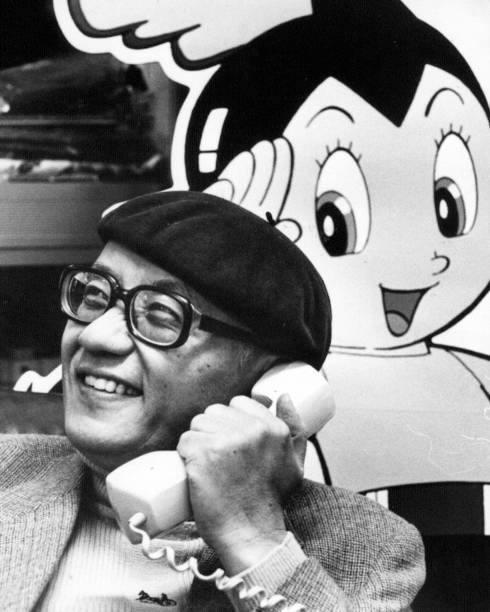
手塚 治虫 (1984年)
Osamu Tezuka (1984)
111 notes
·
View notes
Text
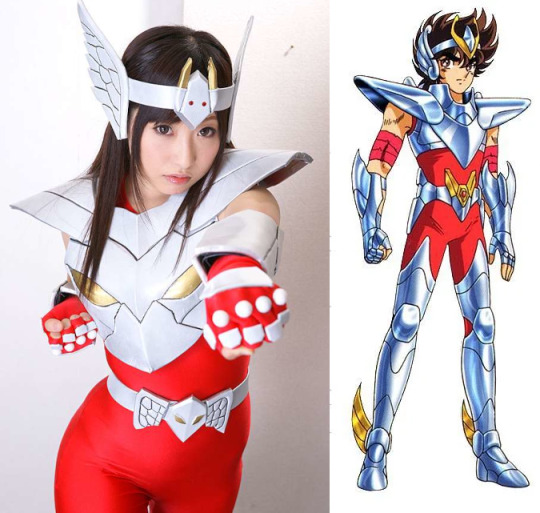
Gender-flipped Pegasus Seiya from Saint Seiya (1985).
34 notes
·
View notes
Text

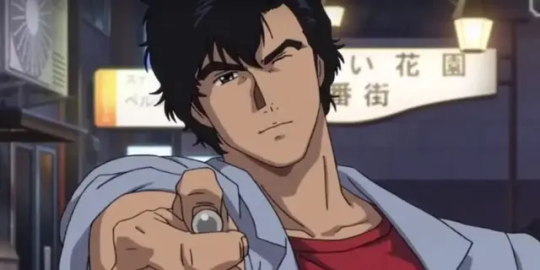

シティーハンター - 冴羽獠
リョウはシリーズの主人公です。 リョウは3歳のとき、中米での飛行機事故で唯一の生存者となった。 彼はゲリラ戦士として育てられ、自分の以前のアイデンティティについては知りません。 戦後、リョウはアメリカに渡り、その後東京に移り住む。
東京では槇村秀幸とともに「シティーハンター」チームを結成するが、秀幸の死後、香がリョウの新たなパートナーとなる。 非常に熟練したガンマンであるリョウは、標的のまったく同じ場所にすべての射撃を着弾させる「ワンホールショット」を実行することで知られています。 彼のお気に入りの武器はコルト パイソン .357 マグナムです。
リョウは同僚の伊集院隼人に「海坊主」というあだ名を発明し、彼はリョウに「新宿の種馬」(新宿の種馬)というあだ名を付けたと答えた(リョウは人を殴ろうとする真の変態だから、皮肉な名前だ) 彼は出会ったり見たりした美しい女性にすべてを言いますが、毎回失敗します)。 リョウはリボルバー、半自動銃、マシンピストル、ライフル、カービン銃、クロスボウを扱う熟練した射撃の名手です。 彼は白兵戦をよく知っており、必要なときには真の命知らずのように運転します。 彼の車はミニです。
6 notes
·
View notes
Text
Misunderstanding
I received a note from someone who was upset I “failed to cite Scott McCloud’s Understanding Comics” in my research for my work on Neil Gaiman's Chivalry and the essays I wrote about it.
I really appreciate that people want to make sure credit goes where it's due, and I have a lot of respect for Scott McCloud's accomplishment with his wonderful book.
I haven't read it myself in some years, and didn't cite it in my articles because I didn't reference it. I don't even know where my copy is so I don't know what McCloud referenced, either.
The information in my articles re: illuminated manuscripts and the Bayeux Tapestry, as well as other theories about the development of sequential art from prehistory, not only predate McCloud's work (and in fact, predate McCloud's birth,) but they are so common and so well known in comics circles that asking me to cite them seems as weird to me as asking me to cite the information that George Washington was the first President of the United States.
A part of me wonders if someone is trying to play, "Let's you and him fight."
No.
But I’m happy to bring to your attention some reading material.
Stephen Becker in his 1959 work Comic Art in America: A Social History of the Funnies, the Political Cartoons, Magazine Humor, Sporting Cartoons, and Animated Cartoons was among the first to discuss the Bayeux Tapestry as comic art. I read that book sometime in the 1980’s. I think a lot of people assume the Bayeux tapestry as comic art was McCloud’s idea, but we don’t all walk around with a reference library in our heads, so there you go. I can’t find my copy of Becker’s work to quote, but I did find an article by Arthur Asa Berger with a mention of the Bayeux Tapestry as comic art in the summer 1978 issue of The Wilson Quarterly.

My first exposure to the idea of comics as descendant of fine art was Maurice Horn’s 1976 The World Encyclopedia of Comics which was my first read re: comics history. I still have my tattered 1976 edition.
While Horn scorned the idea that tapestries and manuscripts could be comic art (see, it was a matter of discussion way back then, so much so that authors were writing snarky asides to one another about it,) he believed the origin of sequential art was in the Renaissance sketches of Leonardo da Vinci - which I think everyone now agrees is kind of a bonkers idea.

I think Horn was just intent on elevating the comic art form by hooking up with da Vinci.
You go, boi.
Comics as descendant of art on scrolls is a very common theory, the easiest to trace being in Manga! Manga! The World of Japanese Comics by Fred Schodt published in 1983 when I was still a teenager. I can't find my copy to show examples, but this text is still in print and you can go read it for yourself.
I was introduced to manga by cartoonist Leslie Sternbergh and bought Schodt’s book at Books Kinokuniya on (I think) a trip to New York around the time of first publication of Schodt’s work. And years later took a trip to Japan with Fred Schodt and a group of cartoonists including Jeff Smith and Jules Fieffer, Nicole Hollander, and Denys Cowan as the guests of Tezuka Productions.
Here we all are.

So, I’m familiar with manga, see.
As for comics as descendant of cave paintings, hieroglyphics and ancient art in general, Will Eisner’s 1985 Comics and Sequential Art not only made all of those points, but made those points with comic art examples. Like these.

And this.

And this.
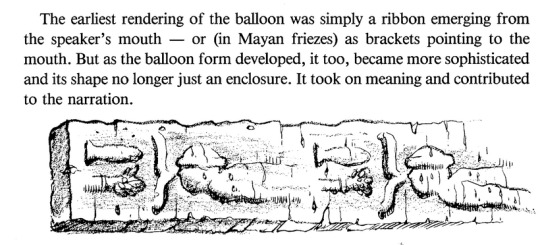
And more than a few words on this:


I find it amusing that someone is questioning why I didn’t cite McCloud when what you should probably be questioning is why more people don’t cite Eisner who produced his book eight years before McCloud published his and who is well known to have influenced McCloud.
Whatever. My book's autographed.
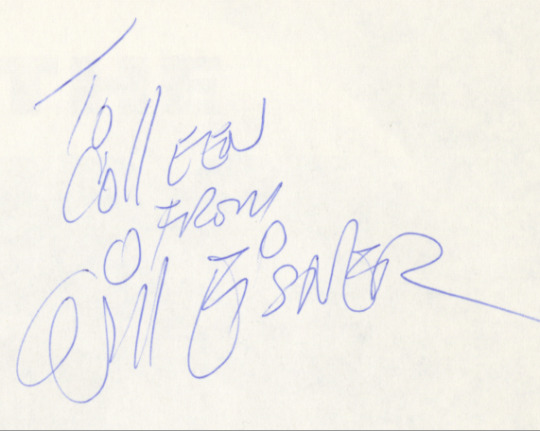
I also danced with Eisner. Eat your heart out.
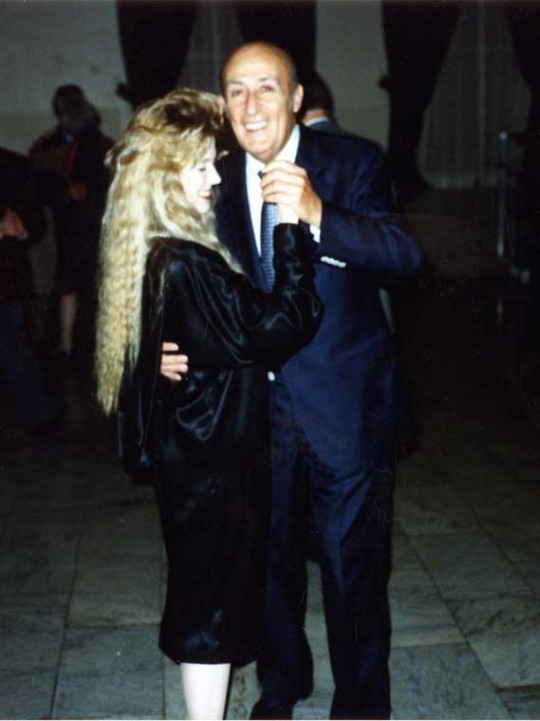
Understanding Comics is a terrific work with huge advantages over every book (that I know of) about comics that came before: it taught comics entirely in the language of comics.
But the discussion in it about the origins of comics and my work especially re: illuminated manuscripts/tapestries, did not originate with McCloud. I research illuminated manuscripts because it’s my hobby and it informs my art.
I encourage everyone to read Understanding Comics because it is an outstanding work.
But it’s not the book that introduced me to the concepts of the development of comic art. It’s not even the point of origin of those concepts. So, there is no reason to cite it.
Also, shocking as it may seem, I occasionally come up with ideas on my own. While I'm younger than McCloud, I've actually been a comics pro longer than he has. So I've had plenty of opportunity to, you know, read things and toss things around, and decide for myself.
When I first read Chivalry and first begged Neil Gaiman to let me adapt it, my head full of the work of Alberto Sangorski and his art for Tennyson’s Le Morte D’Arthur, Understanding Comics hadn’t been published yet.
It's been a good twelve years since I last read McCloud's work, and I don't think I've spoken to him five times in the last three decades. But I'm pretty sure he never mentioned Sangorski.
I hope that clears everything up, and maybe introduces some of you to some works you might not be aware of.
Have a great day.
#understanding comics#comics history#neil gaiman#scott mccloud#chivalry#jules fieffer#tezuka productions#manga#will eisner
2K notes
·
View notes
Text

Aaaaaand here's my second contribution for the @flash-exchange! and this was written for the darling @spoopy-fish-writes. I had the idea for this pretty early and I can't stop giggling at it, honestly.
Title: Mischief
Characters: Will/Fem!reader, Sebastian, Dazai
Prompt: Kabedon
Tags: fluff, kabedon, Dazai being a lil shit, Sebastian isn't helping
You had just finished making that evening's coffee with Sebastian, making light conversation with him. You reminisced about some things from your original time, lightly complaining that so many of the romance books you tried to read could use a little more… impact.
“Honestly, there are so many scenes that could be amplified with a kabedon, but that didn't even come about in our time until the 1980's,” you sighed. You were glad you hadn't picked up the whole tray as a voice from behind made you jump.
“Kabe-don?” Turning quickly you saw Dazai leaning in the doorway, a lazy smile on his face and a contrasting mischief in his eyes.
“Good evening, Dazai. Yes, a kabedon. She's referring to a moment in modern Japanese manga and animation in which one character essentially somewhat traps another character against a wall.” Sebastian moved to the wall and displayed the position. “Now, imagine there's another person between me and the wall with them facing me. My flat hand hits the wall beside the other person's head. Kabe for wall, don for the sound the impact makes. Usually there is romantic tension between the two characters.” You felt yourself blushing as Sebastian explained. You swore you saw a spark in Dazai's gaze as he acted unphased with the new information.
“I see. It dramatically raises tension between two characters. The sudden proximity, an air of dominance. Hm. Thanks for the tip.” He smiled coyly before leaving you and Sebastian in the kitchen. A heavy sigh left your lips and you pinched the bridge of your nose.
“Why do I have a bad feeling about this?”
-
The night was getting long and as much as you and Will loved to visit the mansion for dinner occasionally, you were both ready to go home. The interaction earlier with Dazai had all but left your mind as the two of you walked from the carriage stop back home. That was until you both reached the house and Will lingered instead of unlocking the door. You looked at him curiously.
“Will?” You prompted him softly with his name, his playful and heated gaze making you shiver.
“Apologies, dear heart. Mine mind hath wandered,” he grinned, pressing a kiss to your temple before proceeding to unlock the door. You knew him well enough to know there was something on his mind but there would be a time and place for bringing it up. Thankfully the wait was short because as soon as you were both inside…
*don*
Your back was suddenly against the wall, heart racing as you looked wide-eyed up at Will. Your stomach fluttered excitedly as he crowded your space. His hand had landed firmly on the wall by your head and his smirk made you blush. He couldn’t help but chuckle as your cheeks turned a brilliant shade of pink and he brought his hand up to caress one with his thumb. “My, my. Curiouser and curiouser,” he murmured.
“W-Will…” you stuttered softly, beginning to pout as the pieces slowly came together in your mind. “Did you speak with Dazai tonight by chance?” He laughed and leaned in closer, pressing a kiss to the tip of your nose.
“I know not of what you speak,” he grinned as your pout deepened. “Though… I suppose thanks is owed to him for this most… gratifying reaction. I’ll have to employ this guileful tactic more often, no?”
Taglist: @violettduchess , @strawberry-scum , @writingwhimsey , @ikememesengoku , @kissmetwicekissmedeadly , @jozhenji
#ikemen flash exchange#ikemen vampire#ikemen will#william shakespeare#ikemen dazai#ikemen sebastian#fluff#kabedon
41 notes
·
View notes
Text
An Abbreviated History of Mecha Part 1: The Mighty Atomic Prelude (The 50's and 60's)

Welcome to An Abbreviated History of Mecha anime. Today, we're starting at, as Fraulein Maria would say, at the very beginning. We're taking a quick peak at the beginning of the canon, which means that we're starting back in 1950 (specifically 1952). I should also confess right now: there are two series on here that are demonstrably NOT mecha shows. However, due to their sheer influence on Japanese media as a whole, I feel it is important to bring them up as being honorary mecha shows due to their sheer influence pop culture.
Tetsuwan Atom/Mighty Atom/Astro Boy (1952)

Starting us off is Osamu Tezuka's seminal manga series, Mighty Atom. Known over here in the west as Astro Boy, this series would be what kickstarts a lot of the modern anime and manga industry due to its sheer popularity. Astro Boy would also be one of two series that would be emblematic of how Japanese pop culture would portray the recent use of atomic energy. It should also be worth noting that realizing that Astro technically is a mecha is what got me to start using a broader definition of mecha instead of the classic giant robot definition.
Due to its fame, Mighty Atom has receive multiple adaptations throughout the years. Of note are:
The original 1963 anime.
New Mighty Atom (1980) which updates the series to 1980's animation standards.
The 2003 anime, which does the same, but to the standards of early 2000's anime.
The 2009 CGI movie.
Gojira/Godzilla (1954, honorary mecha series 1)

1954 would also give us Ishiro Honda's Godzilla, the movie that would make tokusatsu-styled live action stories in Japan. Godzilla, alongside RKO's King Kong, would play a large part in popularizing the concept of kaiju. And boy will kaiju play a big part in the history of the mecha canon. As we'll see soon enough, the history of tokusatsu heroes, kaiju, and robots are all intertwined with one another.
Godzilla has starred in numerous movies since the original, but for stories based off of the original there are:
Godzilla Raids Again (1955), a direct sequel.
Godzilla, Mothra, King Ghidorah: All Out Monsters Attack (2001), a Heisei-era production that uses the original '54 Godzilla as a manifestation of the horrors of World War II.
Shin Godzilla (2016), a re-imagining of the original movie set in contemporary times directed by Hideakki Anno.
Godzilla Minus One (2023), the most recent outing inspired in part by GMK.
Tetsujin 28-go/Gigantor (1956)

(Oh hey, this gif again!)
Tetsujin 28-go is the creation of one Mitsuteru Yokoyama and is generally regarded as the grandfather of the giant robot style of mecha. Tetsujin is unique amongst mecha in that it is controlled not by a pilot riding inside of it, but by a little kid with a controller. Tetsujin 28, alongside Mazinger Z, would help to codify a lot of the tropes common to the classic superhero mecha anime that would be prevalent in the 70's. Like Mighty Atom, Tetsujin would receive multiple adaptations throughout the decades.
Shin Tetsujin 28-Go/The New Adventures of Gigantor (1980), which updates Tetsujin's design to look more in line with something like Mazniger Z.
Tetsujin 28-go FX (1992), sporting a radically different look that's more akin to something out of the Brave Franchise.
Tetsujin 28 (2004), a faithful adaptation of the original manga (at least I think it is) directed by Yasuhiro Imagawa.
Cyborg 009 (1964)

Created by Shotaro Ishinomori in 1964, Cyborg 009 is another classic human-sized mecha series. Cyborg 009 would be the first of many hits for Ishinomori, and he will be mentioned again later in this series.
Oh boy... I am not a Cyborg 009 nut, but in terms of adaptations, Cyborg 009 has:
The 1966 Film
The 1980 Film
009 Re:Cyborg (2012)
The Call For Justice Trilogy (2016)
The 1968 Anime
The 1979-1980 Anime
The 2001-2002 Anime (I actually remember when Toonami aired this series!)
Cyborg 009 vs Devilman (2015 OVA)
If you want to follow someone who follows a lot of Shotaro Ishinomori's works, I'd recommend checking out YouTuber Mercury Falcon for more info about Ishinomori.
Ultra Q and Ultraman (1966, honorary mecha series 2)

(The urge to use a gif of Ingraman is strong)
Ultra Q and Ultraman are the first two entries of Tsuburaya's legendary Ultra franchise, with the latter in particular being one of the most famous pop culture icons of all time. Ultraman's influence on Japanese media is so large, that I'll be mentioning it at least once in relation to other series later on.
Ultraman, like Godzilla before him, would get the Hideaki Anno treatment with Shin Ultraman in 2022.
Giant Robo/Johnny Sokko and His Flying Robot (1967)

Another one of Mitsuteru Yokoyama's classic manga series, Giant Robo deserves a mention due to its influence on tokusatsu. Giant Robo would usher in an era of tokusatsu that would rely on using giant robots as the main protagonist.
In terms of adaptations, there are two animated adaptations, but only one will be listed here:
GR: Giant Robo (2007)
If you want to learn a little bit more about the history behind Giant Robo, I'd recommend checking out blunova's video on Giant Robo for more info on this important series.
Conclusion
As the 60's would lead way into the 70's, we would see a lot more live action tokusatsu series involving giant robots. Of course, this would be untenable due to how expensive it was to do tokusatsu effects for television. However, one robot would appear in animation that would change everything.
(Read in the voice of Tessho Genda) AND ITS NAME IS...!!!!

#anime and manga#mecha#astro boy#mighty atom#tetsuwan atom#gigantor#tetsujin 28#cyborg 009#giant robo#ultraman#an abbreviated history of mecha#anime history#godzilla#gojira
19 notes
·
View notes
Text
1. The Birth of Astro Boy
It should be noted that this is not the first Astro Boy manga chapter ever written, but was written in 1975 by Tezuka to give the series a more approachable beginning for Asahi Sonorama's edition/compilation of the series.
Note: Throughout this post, I will refer to the whole series as "Astro Boy" but refer to the character as "Atom." If I get mixed up and refer to him as "Astro" once the text is calling him this, we will just have to live with that because I intend on calling him Atom mostly. If this changes later I'll add a new note to whichever post it becomes relevant on.
I'm not making a timeline here, but as "present day" is 2003, the introductory information states that around 1953, robots "existed in great number" but it took many machines to do the work of a single human.
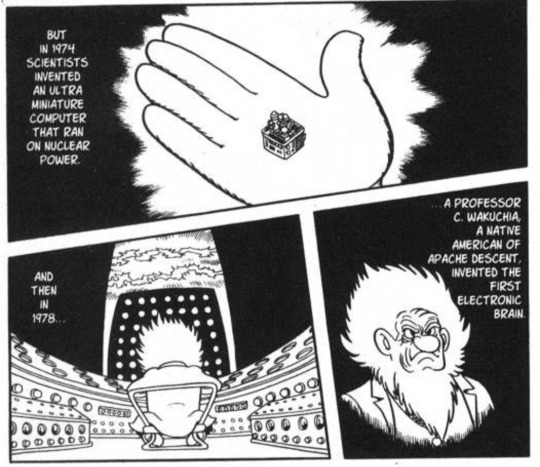
In 1974 our first breakthrough in robotic technology is the "ultra-miniature computer" that runs on nuclear power. This is followed by Professor C. Wakuchia's invention of the first electronic brain 4 years later in 1978. It's also interesting that the manga notes he was of Apache descent. The Japanese professor Sarumane "copied and improved upon the design" and it was used in the first humanoid robot in 1982.

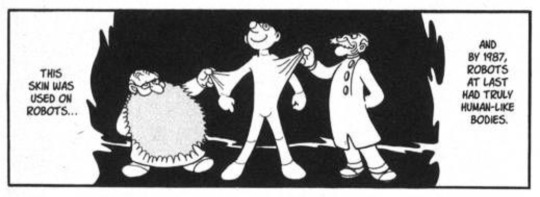
An interesting diversion from the modern-day expected progression of robotics (that being primarily in AI, something not heavily focused on in the original manga and presumably captured entirely by the sentence "First electronic brain") is a heavy focus on that robots were made of metal until Professor James Dalton invented an artificial plastic-based skin in the early 1980's. By 1987, "robots at last had truly human-like bodies."

We start seeing that an important element of robotic development was that around this point, countries became protective of their technologies. Another anti-capitalist anti-militarism W for Tezuka here, and I'll likely end up referencing this later when it comes to international relations in the world of Astro Boy.
While Tezuka didn't heavily stress this, I think it could also be interesting to think about what each country and culture would desire in their robots, and what their own personal goals would be to create a highly advanced robot. Is a truly advanced robot capable of independent decision making, or is it subservient? In what ways is it similar to a human? Can it taste? Cry?
5,000 robots per year in Japan is a "very quick" increase in population, especially in Tokyo. I also think it's notable that "Robots even began studying in schools along with human children" - For a robot like Atom, who is made to be akin to a human, this would make sense, but we see in later Astro Boy media that the idea of robots needing to go to school at all (outside his circumstance) kind of gets lowered quite a bit. I can see why - The benefit of school for a robot who can acquire all the information needed rapidly through either downloads or reading it or having it delivered through audio or video is exclusively social (which is what Atom needs it for, too, although he also receives the information he's learning through school as well instead of through download in the original manga, and as far as I know, the 60s, 80s, and 03 anime) and a robot does not need to learn social skills in the same way a human child does. From an American perspective, around the time the original manga was being created African Americans were actively pushing to remove segregation in schools, and I think this whole movement and reaction to it influenced later Astro Boy media as well, as at its core I believe Astro Boy is about what it means to be human, and therefore, human rights.
From a lore perspective, I agree more with the modern take that robot children would be segregated from human children in schooling and that moving Atom to a human school would be a step that received notable pushback. Robots are (from the belief of many humans) intended to be subservient and do not need the social development of having human friends as equals. If a human had a problem with a robot child, the robot child would be expected to resolve the problem entirely, even if it were not their fault. I also think that the idea of robotic children as they appear in Pluto is extremely interesting (but this isn't the place for that discussion so I'll keep it brief) as they are for the development of the parent robots and the idea of a robotic child ends up limiting the ability of the child robot to develop - If a robotic child could develop, they would no longer be childlike. We don't really see anything about developing child robots into another State in Pluto, so this leads me to believe that a child robot would be kept at a certain level of human development without much of a chance to grow from there (thus making it strange to have a child in the first place - Is the joy of a child not seeing them grow? And we do see some of this in Pluto, that one of their fondest memories with Robita is her walking for the first time, a similar experience to what human parents experience with their own children who do grow and change.) The lack of growth of child robots is also sort of touched on in another original Astro Boy comic, so I'll touch on it later too.

These are the two robotic laws we know so far, and if/when we see more of the robotic (production) laws, I'll be listing them together.
These laws being of robotic production are interesting - If a robot does not prioritize human happiness over their own, this robot is technically against the robotic laws. If a robot injures or kills a human, this obviously results in the robot being disassembled, but it seems like it would also result in their creator being charged as well, as the robot was able to do those things by virtue of the creator not putting in enough safeguards. Again, Pluto plays with this a lot more (robots are capable of harming humans but don't.) (but Pluto doesn't touch on creators of robots also being at fault) but if/when we get to a Pluto analysis, I'll be discussing it then.
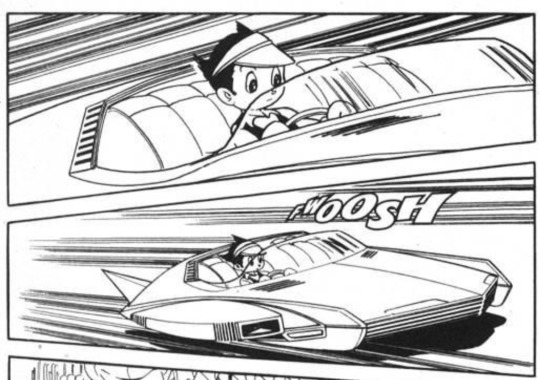
We can see here that human child Tobio is driving a car. This is mostly funny to me - If the robotic car is safe enough for a child to ride in alone, why are his hands on the wheel? Why did it crash at all? Would that crash not be the fault of the robotic car's manufacturer, then? The idea that this accident should be blamed on Tenma (introduced at the very latest in the 1980s anime) is interesting considering this. By 2003 we don't even see him driving a car, he has something more like a bicycle.
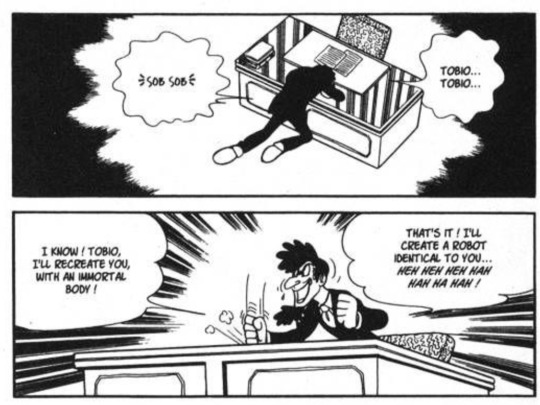
Yea that makes sense. Go ahead and do that man. God I love this series.
Anyway our stress here is on "immortal body" and the goal of having Tobio back, but unable to die. No mention of the weapons and shit he's putting in there but that's probably why.
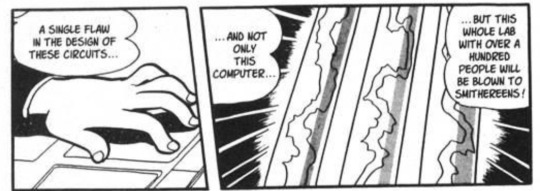
smithereens are basically the most classic thing to blown to.
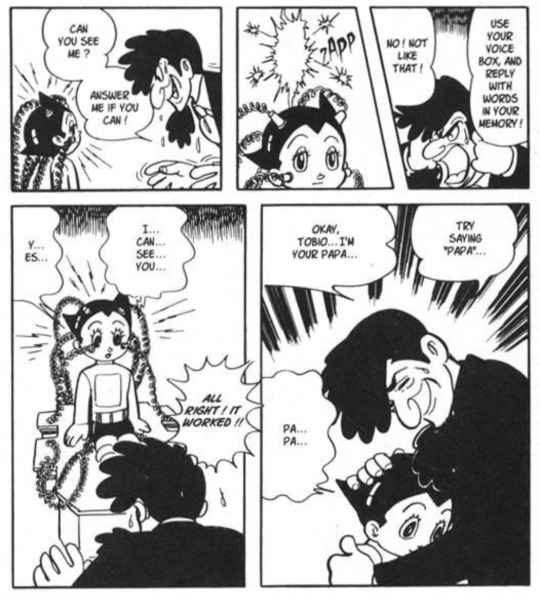
Hooogh I'm normal about it.
First indication that a problem with Atom (for Tenma) is his robotic nature, despite that being something He Did in making him. His natural response is not human enough, and Tenma's response (likely partially for humor) is to yell at him and get angry. I'm also very fond of Atom's facial expressions not being developed yet. That kind of thing is just really special to me, it shows that a lot more work still needs to go into this from both of them to achieve what Tenma really wants - and most of that work is in counteracting the natural way Atom is liable to act and having him emulate humans more closely.
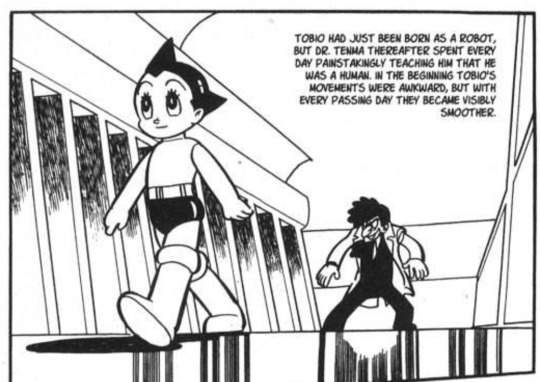
Difficult to say at this point if the original manga has Atom believing initially that he is a human, we do see more play with this in the first episode of the 1980's anime, but it's not really touched on that hard within Astro Boy itself as far as I remember (I suppose the 2009/10 movie does a little, lol, and so does Pluto.). That said, a robot believing themselves to be human is much more notable in Metropolis.
If I were da boss. and I were making my own interpretation of Astro Boy, I do think I would play with this more. The identity crisis element would be really intriguing to me, especially considering that a robot that believes themselves to be human would believe they were above the robotic laws, and the crisis in discovering not only that your identity and self is a lie but also that you are now disallowed from things you previously did not know you were disallowed from and suddenly your own happiness is not allowed to be your priority. I think it would drive some of the robotic rights stuff home a little (although, and I may be wrong, I don't believe the original run of the manga ever really touches on the idea that robots might be entitled to their own happiness over the happiness of humans if the two do not interfere with one another. If I'm wrong we'll see! I have memory issues so some things will be a surprise to me as well even though I reread this series somewhat frequently)
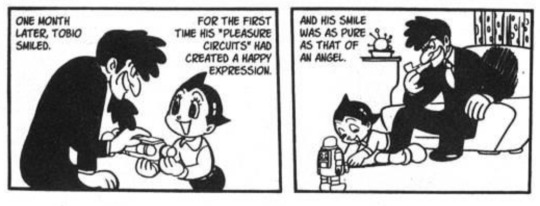
YEAG IT WAS. IT WAS AS PURE AS THAT OF AN ANGEL YOURE SO RIGHT
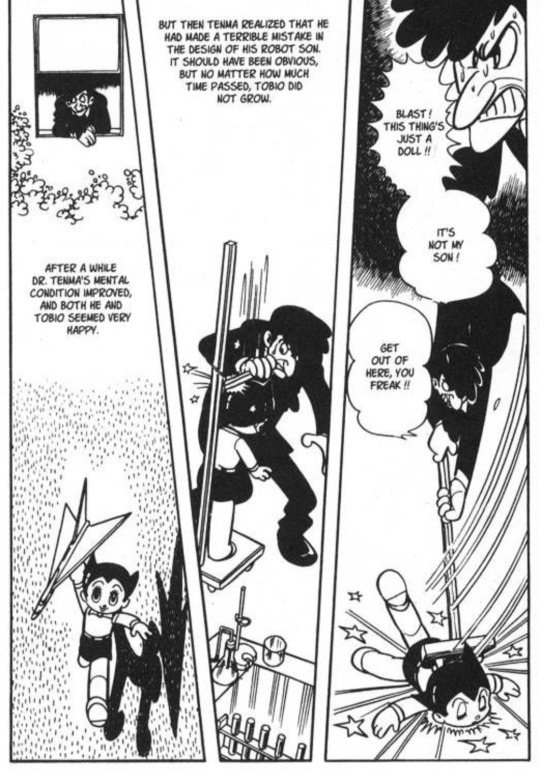
Kind of already started touching on this - But yeah, the unhappiness here (as well as in 1960's anime) comes from him not physically growing, which is funny because You Probably Could Have Made Him Do That In A Number Of Ways But You Shoved A Bunch Of Rockets And Guns In There Instead. I will also touch on one of the ways in a comic where it is made clear to be an option - A robot's brain can be transferred between bodies, so a new body can be made to suit a robot if they prefer, rather than like, surgically changing what is present.
In 1980, the problem is that Tenma believes that the lack of progress on Atom becoming more human is unresolvable.
In 2003, the problem is that Atom is too similar to Tobio, and Tenma does not want Atom to hate him in the same way Tobio did.
I actually do think that the 2009/10 movie was onto something with this because the problem there is that Atom is too similar to Tobio, but Tenma did not know his son and is under the impression he is different. That's a genuinely interesting approach. Atom is doing things Tobio would have done, acting as Tobio would have, and Tenma is like. This is nothing like my son. Because he just didn't know him he never gave him the time. This forces him to reckon with his own grief just the same - He sees the "differences" in Atom and Tobio and is reminded that his son is gone.
In Pluto, the problem is that Atom is too eager to please Tenma and is not similar enough to Tobio. Atom enjoys things and is happy about things, but Tenma remembers that Tobio hated those things. He brings it up, and Atom is like, okay I'll be more like him. But the fact of the matter is that Tenma knows there are fundamental differences now, and this is a different child. He's forced to reckon with his own grief (despite his best efforts to bring Tobio back) in that his son is gone.
The last two are a lot more about grief than they are about inadequacy, and I like that a lot. It's not in any way Atom's fault that he's rejected - It's that the premise of his existence is flawed. A father can't replace their lost child.
The unhappiness coming from Atom not physically growing is notable though, in the same way I mentioned robotic children earlier. They can't grow, that's an important part of who they are. They are created to be children, they can be nothing but children - But a human child is a growing thing, and a human child is defined by the fact that they are changing - they are becoming less childlike every day. A human child is defined by impermanence, and trying to make a child that will not cease to be a child, by death or otherwise, will make a child that is not a child at all.
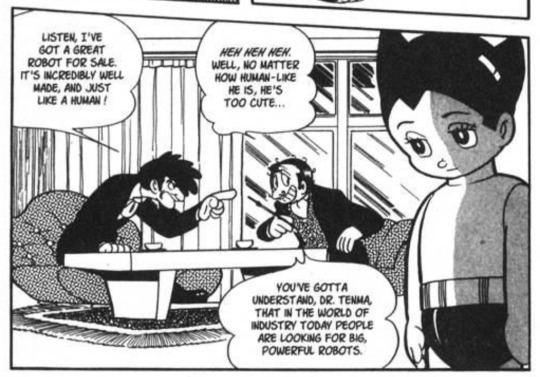
He's so funny for just trying to sell him to any old guy who runs a robot fighting ring after spending like presumably hundreds of millions of Japanese taxpayer dollars on this robot.
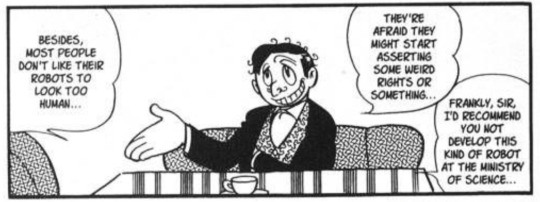
Ahh! Most robots are not created to look human, but Atom is. He's fundamentally representative of a lack of boundary that humans want to ignore. Why would someone want a robot that is not subservient?
To be frankly honest I feel that Pluto missed out on some of this - I like the more explicit approach to hate groups but they don't ever really discuss why they hate robots beyond "they put humans out of a job." I think there's a lot of interesting stuff to be explored here!

Now that he's no longer being used to replace a human child, he's reduced to the same level of robot as others. I may be wrong in remembering this, but I believe in 2003's anime we do see some robots being like, "Atom is a privileged robot and doesn't really represent us - many of us have a built-in purpose, many of us do not have the right to self determination he has. Many of us do not have the humanity he is given, but he is meant to represent us just the same."
The fact that he's had access to these experiences already puts him between robot and human.
Also, "He hadn't learned how to cry yet" is devastating.
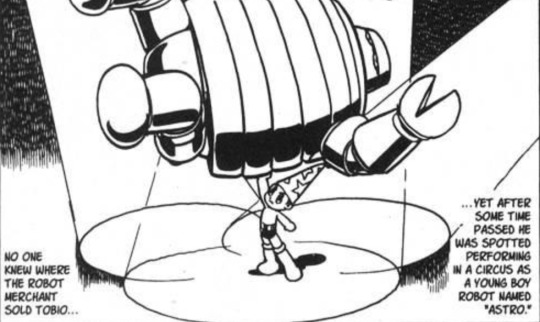
It's interesting that Hamegg is not the circus ringleader here as he is in some later iterations (although, I'm biased, I prefer 2003's approach where he is not sold to a circus at all but rather disposed of and Ochanamizu finds him and brings him back. Sue me.)- So actually, Tenma just sold him to some guy who would sell him elsewhere.
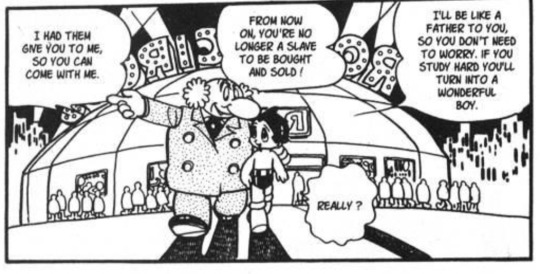
Wow that was easy!

(guy who hates dichotomies between good and bad alert) Nice dichotomy idiot. now what lies outside it.
Thanks for getting through this long analysis of (checks book) 23 pages of content. I should have a little less to say about most other chapters but this one has a lot to chew on.
#astro boy manga analysis#astro boy#mighty atom#tetsuwan atom#Please respond if you feel like it! I'm pretty sure no one at all is going to read this actually.
27 notes
·
View notes
Text

greetings new and veterans challengers of our net! today we got some news worth celebrating: recently our blog has reached 1k followers! we're very excited about everyone's creations being appreciated by so many people♡
as a thanks to you all for making this net what it is today, we're releasing a new type of challenge: badge battles! (inspired by AWC as well)
the first fight is to decide which ones are better: 20th century animangas/games or 21st century animangas/games. so pick your side, grab your new role to show which you're voting for, rec stuff and state your facts to drag the undecisive ones to vote what you want and WIN.
to complete the challenge and earn the badge, you must:
- Make ONE original creation featuring an animanga or game from year 2000 or earlier, OR a creation featuring an animanga or game from year 2001 or after
- The year the source media you decide to edit started releasing is what counts. This means that, for example, if you use Banana Fish and want to vote for the 21st Century, you need to edit the anime which started releasing in 2019. If you want to vote for 20th Century, you need to edit the manga, which started releasing in the 1980's.
- Mention @animangacreators and include "badge battle #1" and what team you voted for in the caption of your edit
- You can only chose one
- This challenge is worth ONE challenger point
- Your creation must be posted by midnight CST (UCT -6) on September 20th .
- Submit the link to your post on #challenge-creations channel on discord so staff can award you the badge on the members page
if you have any questions, please check our faq page and feel free to message staff on discord. we can’t wait to see your creations!
53 notes
·
View notes
Text
Animation Night 155: Kunihiko Ikuhara
...or Ikuni to his fans. The Utena guy.

Since the very beginning of this series, Ikuhara’s been someone I’ve been desperate to cover. He’s exactly the kind of weirdo we like around here. And you know how much the Tumblr girlies love Utena.
But only now, at Animation Night 155, is Ikuni getting his due. Why so long? Well, let’s put it like this. Ikuni’s very much a TV guy. Revolutionary Girl Utena is 39 episodes and a movie. Mawaru Penguindrum: 26 episodes. Yurikuma Arashi is 13, as is Sarazanmai.
And if we’ve managed to cram in 13-episode series into this format, it’s always been with difficulty - take Heike Monogatari [AN91], Alexander Senki [AN125] or Houseki no Kuni [AN97]. It generally takes multiple nights. So I thought, that’s fine, we’ll do Adolescence of Utena, the movie, and, um... hmm.
Luckily for us they just made a new Penguindrum compilation movie! Problem solved let’s go!
And with such a long wait behind us, let’s try and do the guy some justice.
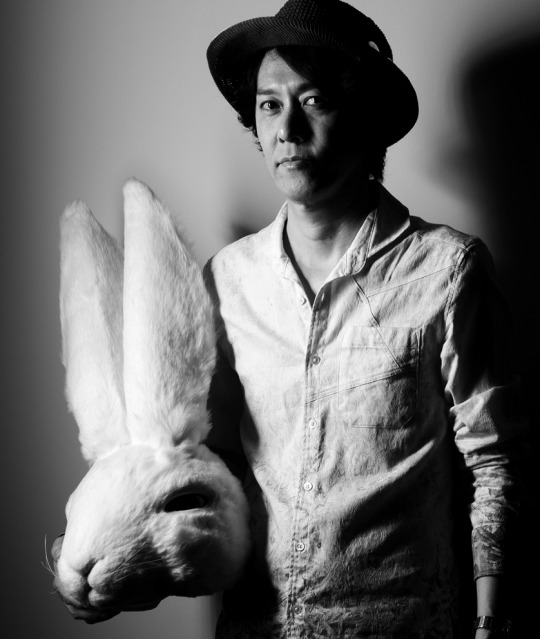
So. Who is this guy with the rabbit? (Picture from his website. Though this is a plain outfit by Ikuhara standards!)
If you were trying to summarise Ikuni’s works... you could probably say something like this: surreal, densely symbolic stories about the difficulties of real human connection. Sort of like the anime version of Lynch. But if that sounds too cerebral, let’s not forget that an episode of Utena involves a character gradually turning into a cow for no particular reason. He’s just as much a goofball who loves to tell lies.
Ikuni came into the business back in the mid eighties, at Toei. [c.f. AN149 for a brief history of Toei!]
So. In the late 70s, Toei had established a powerful niche to themselves in long-running, wildly popular series such as Galaxy Express 999, but most of their work was much less high-profile. Take a glance, see how many of these you recognise - I would guess not many! Hot out of art school, Ikuhara became an assistant director under the wing of Junichi Satō, later well known for shōjo anime such as the avant-garde Princess Tutu (2002-3), or Ojamajo Doremi (1999-2000).
But of course, the most renowned Satō project is Bishōjo Senshi Sailor Moon (1991-7, Pretty Soldier Sailor Moon). Satō directed the first half, and then Ikuhara took the reins for the rest. For Satō it was his debut as a director, I’ll talk more about his tenure on Sailor Moon in just a minute, but first, let’s get a little context about... magical girls!
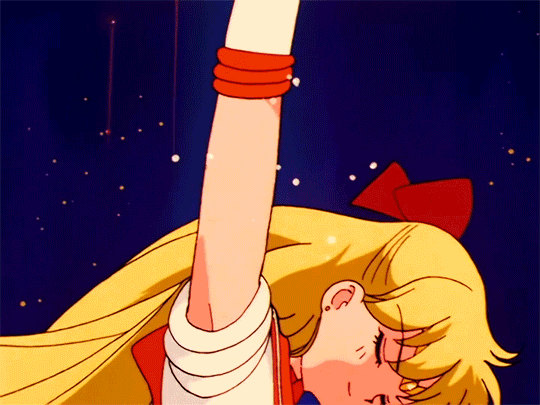
(quick! tell me which sailor this is! you have five seconds)
Magical Girls! 魔法少女 mahō shōjo. An ordinary high school student makes contact with a powerful magical being, who may also be a cute mascot character, and agrees to help. Now she can transform: manifest a stylish outfit, gain suitably themed powers, and fight monsters of the week... but she’s got to maintain a double life as a regular student. The henshin (transformation) sequence itself will usually be an extremely elaborate sequence that is played regularly (a ‘bank’ shot).
By now it’s one of the absolutely central anime archetypes, one people are likely to recognise even if they’ve never watched a magical girl show. It’s been parodied, it’s been genderflipped, it’s spun off a dark otaku-oriented variant.
But it wasn’t always so! Everything must begin somewhere. Very quickly reeling this off then... Osamu Tezuka’s 1953 manga Princess Knight is seen as the earliest proto-magical-girl work; Himitsu no Akko-chan (1962-5) as the earliest true magical girl manga with the elements of the genre, and 1966′s Sally the Witch as the big populariser. In the 70s, Toei started producing them in a big way, known collectively as 魔女っ子 majokko series (‘little witch’).
The actual phrase 魔法少女 mahō shōjo was introduced in 1980 with 魔法少女ララベル Mahō Shōjo Lalabel. With the economic bubble in full swing, other studios started to join the party - notably AshiPro with Minky Momo, and Pierrot, the studio behind epoch-defining megahit Urusei Yatsura, who entered the arena with Creamy Mami, the Magic Angel (1983-4). Why is she creamy? I don’t know, but that’s her stage name as an idol; the manga was designed to promote an actual idol singer Takako Ōta. This business model proved wildly successful, and even today anime production committees usually include record companies who use the show as a vehicle to promote a song or group. Toei no longer had exclusive hold on the matter of girls, magical.
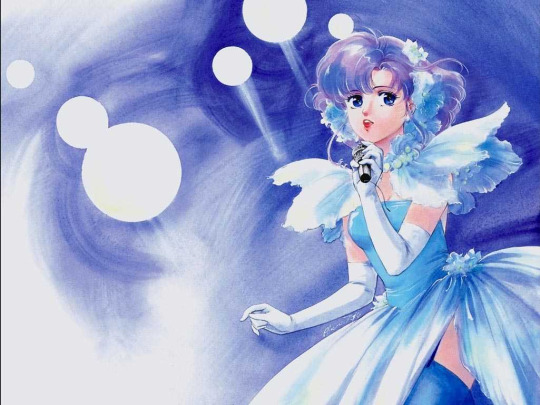
Visually here we’re seeing 80s-style bishōjo, the same as over the fence in sci-fi series such as Macross. Mostly the stories are comedies, following in the footsteps of Urusei Yatsura.
What was missing from the formula at this point? Surprisingly, the henshin sequences! It’s not that magical girls didn’t transform, but they would be more likely to transform into something like an aged-up version of themselves, and the act of transformation wouldn’t be given the same importance. This final ingredient was to be found over in tokusatsu land - Kamen Rider and Super Sentai.
So, that’s where Sailor Moon came in at the beginning of the 90s - first a wildly successful manga by Naoko Takeuchi, and in very short order a TV series at Toei. Takeuchi came up with the idea of fusing the magical girls with sentai: instead of a motorbike-like Rider suit, the girls would get sailor fuku. And that means every magical girl transformation is in a sense a homage to this one.
youtube
Sailor Moon tells the story of a girl called Usagi. She’s a clumsy and forgetful audience-identification character - perhaps even to point of being a Huineng-type character? - but she’s informed by a talking cat that she’s the guardian of Earth, soon to be joined by a number of other girls from her area who are, collectively, the Sailor Guardians (セーラー戦士 sērā senshi). To fight, she activates a magical brooch and, that ^ happens.
Why? Well, the Dark Kingdom is invading! They want to free the villainous Queen Metaria. In past lives the Sailor Guardians fought those guys, and now they need to get back on the job. The forces of the Dark Kingdom (and numerous subsequent enemy factions) arrive in the form of a series of themed villains, much like the villains in a tokusatsu show. Outside of fighting those guys, it’s gentle comedy with a large cast, not so far from the works of Rumiko Takahashi. In fact it’s apparently a fair bit more comedic in tone than the manga, and a chunk of that can be credited to Ikuhara’s influence.
It’s hard to try and summarise the 90s for anime, it wasn’t just one thing. Even as the economic bubble popped, the movies got increasingly ambitious, reaching for more complex emotions and darker themes with incredibly complex animation to match. And to a certain extent, that was also true on TV, by which I mean “Evangelion happened”. But it was also an age of a return to more limited animation. If you wanted to make a TV anime, you had to be smart about using all the tools you could to cut corners. You could keep a bank of reused shots, or for a joke, transform a character into a much simpler caricatured design with more limited animation. At the same time, photography was getting more advanced, and animation techniques were getting more sophisticated.
Even so, a lot of the credit for the art of working effectively in limited animation goes way back to Osamu Dezaki, who back in the 60s and 70s established many of the iconic ‘anime’ techniques. I’ve written about him before back on Animation Night 95, but as much as that covers the history, it doesn’t say a lot about Dezaki’s style. So let me pull in this video, which will helpfully illustrate the important examples...
youtube
The relevant period is when Dezaki directed on Aim for the Ace! (エースをねらえ! Ēsu o Nerae!) - where, in contrast to his earlier work which was comparatively cinematic, he started to push in a more theatrical, abstracted direction, prioritising conveying emotion over realism. Still frames (with the famous ‘postcard memory’ effect), simplified background details framed to draw attention to the important stuff, repeating an important shot multiple times - oh, that’s just Utena, huh? And while Dezaki influenced just about everyone, but for Ikuhara, he’s a massive touchpoint.
Designs were also changing - in contrast to the rounded bishōjo of the 80s came more angular and blocky designs. Take Slayers for example:

Hold onto that thought because we’re going to talk about Utena in a minute. Sailor Moon didn’t go quite that far, but Kazuko Tadano’s designs were very effective in conveying a lot of appeal in quite simple shapes. Usagi in particular has an instantly recognisable hairstyle. But it’s also a style very amenable to simplification.
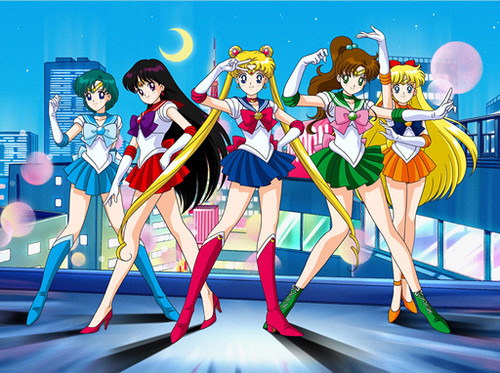
TV anime in this period ran long. Nowadays, the norm is one cours (‘cour’ if you’re not feeling pedantic) of 12-13 episodes, sometimes not even that. Back then you could easily see counts in the 50s or even hundreds. Such is true of Sailor Moon: crazy popular in both Japan and, in its heavily localised dub, America, and with a premise flexible enough to run for years. In the end it racked up some 200 episodes and several movies.
The Ikuhara period starts with the Sailor Moon R movie in 1993, then the series proper starting mid Sailor Moon R and then Sailor Moon S in 1994. Not sure which episode he took over, but S begins at 90. This is a post about Ikuhara (no, really!) so we should ask, how did Sailor Moon change once he took the reins? Let’s have a look at some of his favourite themes, as they appear in the Sailor Moon R movie, based on his own notes...

Lesbians - Not so much in the R movie, but once S gets going... big controversy! Sailors Uranus and Neptune were a couple whose dynamic was one of the most popular in the show, but this would be heavily censored in nearly every localisation, notably the American one which made them cousins.
Flower imagery - Ikuhara decided to set his first project as director in a botanical garden, naturally.
Lost connections, the distance between people - to quote the linked blog...
Ikuhara compares the reunion between Fiore and Mamoru with that of being stuck on a train in-between stations when suddenly you notice you’re standing next to an old friend you haven’t seen in years.
At first you’re both excited to see each other again and kill the time by catching up on each other’s lives. But eventually you run out of things to say, and the conversation just kind of dies off, leaving you both standing there in awkward silence.
Creative editing, use of music - 18 second long scene of Tuxedo Mask getting stabbed? Musically timed fight? Mm.
Darker themes - let’s watch the girls incinerate a field of flower monsters! At one point Usagi would nearly die! Ikuhara tried to keep it ‘fun’ and lighthearted, but just couldn’t do it, he says. Nothing on the level of where his later work would go, but definitely harsher than your average episode.
Vaguely hinting that some element is key to understanding everything, and then refusing to elaborate further - oh yes.
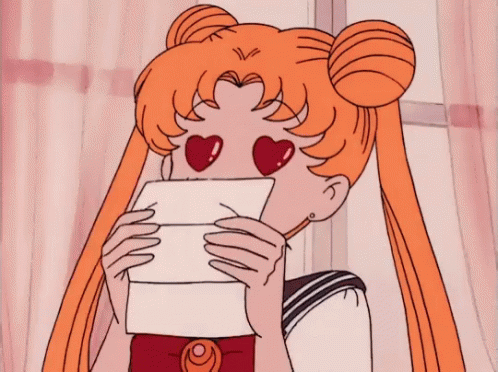
Which isn’t to say that Ikuhara’s Sailor Moon instantly became Utena. Rather, the seeds of his interests as a director, the sort of emotional arcs he’d like to portray, were there. I regret that I can’t really comment in much detail on what Ikuhara did in his actual run on the TV series - I’m sure I have some big Sailor Moon fans here who could fill me in and tell me if I’ve described anything wrong.
Working on Sailor Moon, in any case, also got Ikuhara used to technical elements that would become part of his stylistic fingerprint. We mentioned the transformation sequence, the elaborate bank shot with accompanying music that would recur in nearly every episode. I am less sure about other Dezaki-esque elements, like jokes based on repeating the same sequence with minor variations.
Eventually, Ikuhara’s run on Sailor Moon would come to an end. The final arc of the show saw the Sailor Guardians facing... themselves, from a distant bad future. But for that final season, Ikuhara had already stepped down. Where did he go...?
You see, Ikuhara chafed under the creative restrictions placed on him by Toei. Turning down an offer from Anno to work on Eva(!), he set off to found his own group, Be-Papas, along with...
the famous shōjo manga artist Chiho Saito, animator Shinya Hasegawa, writer Yōji Enokido, and producer Yuuichiro Okuro
and before long also recruiting composer J.A. Seazer, known for his work with avant-garde dramatist-filmmaker-writer-poet Shūji Terayama - another big influence on Ikuni, incidentally. What did Be-Papas make? Just one anime, after which they disbanded. That anime was... Albert Ei-
youtube
That anime was Utena.
Oh man. This is the one.
少女革命ウテナ - Shōjo Kakumei Utena. In English, Revolutionary Girl Utena. Now the time has finally come to write about it, I’m nervous. Could I possibly do justice to Utena in a single blog post? Is that why I spent so long writing about Sailor Moon?
Let’s start with the aesthetic: French Revolution-esque outfits that would be comfortable in Rose of Versailles. A school made of white stone; architecture that is strange, avant-garde. Roses. So many roses oh my fucking god. It draws heavily on the Takarazuka Revue, which I wrote about previously on Animation Night 92 in the context of Ikuhara’s protege Tomohiro Furukawa.
Utena is about a girl called (wait for it) Utena, who attends a school of sorts called Ohtori Academy. But it’s a school only in a fairly abstract sense - it’s more like a palace. She wears a distinctive masculine uniform, and shortly after transferring in, discovers a mysterious underground duelling society who go to a strange abstract battle arena outside of school hours. There, they attempt to strike the rose from the other duellist. The winner of the duel gains custody of Anthy Himemiya, the ‘Rose Bride’. At some point, whoever possesses Anthy will gain the nebulous power to ‘revolutionise the world’. With me so far?

Utena walks in and immediately wins her first duel, establishing an initially frosty relationship with Anthy. But the White Rose duellists won’t take this lying down. Over the first series of episodes, we learn about each of the duellists and their motivating conflicts, culminating in an attempt to defeat Utena. (She walks up the stairs every time.) They lose every time, but the point isn’t really about whether Utena will win or not - it’s about introducing us to a collection of fucked up guys, and then making them even more fucked up.
But it’s not all high drama. A lot of Utena is just straight-up antics, which is to say, just about any time Nanami is on the screen. There’s a greek chorus of shadow girls who comment on the events of the episode. The broad strokes are hard to miss, but the subtler, more obtuse stuff is the sort of thing that can get you into an almost endless rabbit hole of analysis. Don’t take things too literally! You could probably call it at least a little Brechtian in how much it foregrounds its own artifice.
After Utena’s defeated just about everyone at the White Rose, the Black Rose arc introduces a new element. Now, characters from beyond the duelling circle will go down an elevator to guy who renders a fucked up sort of anti-therapy which will motivate them give into their worst impulses and have a go at Utena. Utena, meanwhile, is harbouring a complex where she needs to live up to an ideal of fairytale prince following an incident from her childhood - and oblivious to what’s actually going on with Anthy.
Then at last Anthy’s brother Akio shows up - the actual prince from the upside-down castle in the sky that represents the power to revolutionise the world, and the architect of the monstrous system. It turns out he’s been incesting Anthy, that she’s complicit in all his shenanigans (guess who was behind the Black Rose thing). Moreover, Utena is pulled in to Akio’s orbit, an ugly, abusive relationship... that is conveyed mostly through visual metaphors involving cars.
The finale is... complicated to explain. But it gives us one of the most iconic pieces of cinematic lesbianism ever animated, as Utena reaches for Anthy, refusing to be pushed away (by stabbing) or let Anthy remain in her state of self-inflicted pain, and they are able to escape the academy and its system, at the cost of being separated. What future they have outside the academy is left unspoken...
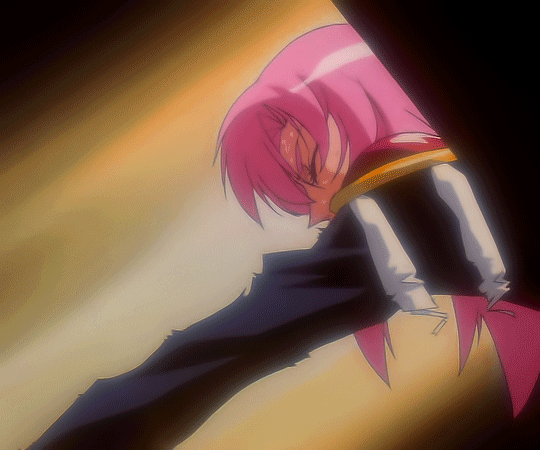
And that’s just scratching the surface. If you ask the hardcore Utena fan, just about every element of every shot is dripping with meaning. You can’t take everything too literally, but you definitely have to take some portion of it literally or you don’t have a story and characters at all.
Visually, the characters in Utena are designed by Shinya Hasegawa - and as much as they are recognisably ‘90s’, they really push it. People are long and faces - noses and chins especially - are pointy. Characters tend to be reserved and stoic in their facial expressions, unless they’re Nanami, in which case all bets are off. Animation-wise, JC Staff did the work under Be-Papas’s direction - and as much as it uses limited animation for effect, it’s really got the goods, especially in the duel sequences and the bank shots (Utena climbing the stairs? Not CG!).
Did you know Yoh Yoshinari was on it? I didn’t until today! So too was Mamoru Hosoda.
Remarkably for such a deliberately challenging show Utena was pretty successful! This was the era between Eva and Lain: it was an excellent time to be making something really experimental and push those genre boundaries. (One thing I don’t really know is how Utena got funded in the first place, but all the big names attached to the project probably gave them some pull.)
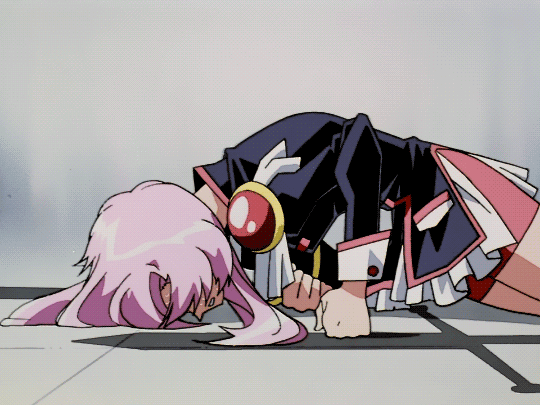
Alongside the anime came a manga by Saito - but neither is really an adaptation of the other, they’re just two different interpretations of the same general concept and premise, produced at the same time. And in fact, Ikuhara and Saito clashed heavily over the direction of the series, particularly in regards to whether the relationship between Utena and Anthy should be presented as romantic. Saito did not believe that shōjo audiences would be on board with the yuri, but Ikuhara refused to back down. (Saito eventually changed her mind.)
With all this success, they went ahead to make a movie. Now, usually a compilation movie of a successful TV series will cut out down the story to fit the runtime, reanimate a few scenes and call it a day. But this would be all but impossible with Utena, which is so tied to its episodic structure and use of repetition. And in any case, Be-Papas had bigger ambitions!
The film would be titled 少女革命ウテナ アドゥレセンス黙示録 Shōjo Kakumei Utena: Aduresensu Mokushiroku, literally Revolutionary Girl Utena: Adolescence Apocalypse, though in English it’s usually given the shorter title Adolescence of Utena. It is kinda sorta a condensed version of the series at first... and then in the latter half it goes completely off the rails. This time Akio is long dead. And he’s not the only one! It ends with this absolutely nuts sequence where Utena turns into a car to drive Anthy out of the academy, pursued by Shiori, who also turns into a car. I still can’t say I really understand it, or how it relates to the ‘car is a rape metaphor’ role in the TV series? But it looks beautiful.

Compared to the series, the movie features the expected higher drawing counts and flashier animation... but the really novel aspect is the architecture. This movie goes absolutely wild with it: the Ohtori Academy this time is far stranger and more intricate, looking less like a regular old European palace and more like something dreamed up by the Russian avant-garde.
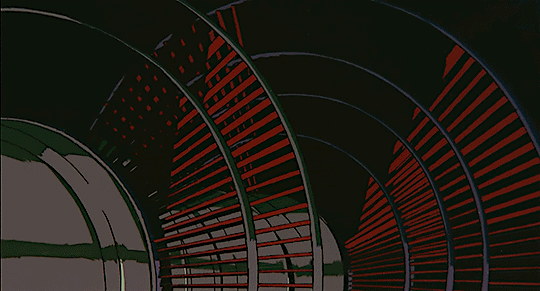
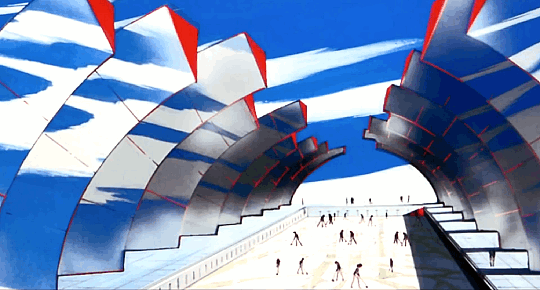

It’s less of a summary of Utena and more of a companion piece. Seen on its own by someone who’s not familiar with either... I’m not sure how it would come across! Maybe you’ll just think I’m insane. Maybe you’ll be right.
So, some 3000 words into this post, I’ve finally told you the first movie we’ll be watching! That���s right: we’re going to jump in at the deep end and enjoy Adolescence of Utena. You don’t need to have seen the series.
After Adolescence, Be-Papas disbanded, as if following Monsieur Dupont’s injunction that radical groups must exist for a single purpose and then disband. Ikuhara left anime for a long time, like twelve years. He wasn’t entirely cut out from the industry, occasionally dropping in to storyboard an episode or two (for example, Episode 2 of Diebuster, or the OP to yuri series Aoi Hana). But for the most part, he turned his attentions to other mediums.
In that time he published a shōjo manga, which was poorly received for being a lot more conventional than Utena; he also wrote a novel called Schell Bullet which, get a load of this...
As a result of gene manipulation, society is segregated by genes into "Majors" – intersex humans who maintain a monopoly on stronger genetic material – and lesser dual-sex "Minors". (Ikuhara stated that he chose to make the Majors intersex because he wished to create "a race which combines the good parts of both women and men."[1]) Protagonist Ors Break is hired by the intergalactic trading company Balt Liner Corporation to pilot a schell, a bio-organic mecha, by claiming to be a Major. When the truth of his Minor status is revealed, he comes to an agreement with his superior, a Major named Delbee Ibus, to continue working for the organization.[1][2]
...and another serial novel called Nokomono to Hanayome, described as ‘Lolita hardboiled’ (I believe as in ‘Elegant Gothic’ rather than as in ‘Nabokov’s novel’). This last was a precursor to Penguindrum - animal costumes, the a story about the 1995 Tokyo sarin gas attacks.
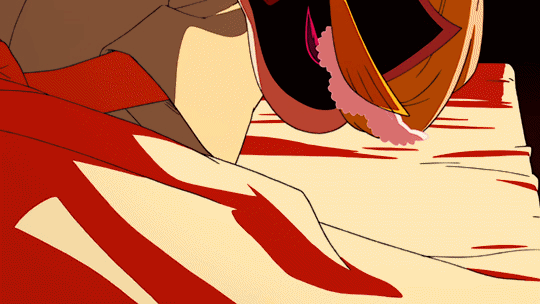
In 2011, Ikuhara came back to anime. Why? And why did he leave in the first place? itsamystery.jpg. In any case, his new project was... Mawaru Penguindrum. It’s about, I guess you might say, the abandoned children of cultists who connect to a supernatural penguin being through a hat. But honestly it’s even tougher to attempt to summarise than Utena. There’s a “child broiler” involved. That’s just the start. And this post is already very long.
So, it’s time to split it. You’ll be able to read more about Penguindrum tomorrow (or later today, if you’re also staying up insanely late in the UK).
Animation Night 155, in its cosy new Sunday timeslot, will be running (if all goes according to plan) at 8pm UK time. That’s about 13 hours from the time of this post. The plan will be to watch Adolescence of Utena and the two movies of Re:cyle of the Penguindrum, for a total of about five and a half hours. (Sorry Sailor Moon fans! I’d really like to squeeze in the R movie too, but I underestimate how long Penguindrum is in movie form. We’ll find another day to do Sailor Moon though!)
If you’ve read all this so far, thanks so much! I’ve wanted to do a proper Animation Night on Ikuhara for ages, and there’s so much I can write about. So far it’s all history, but we wanna do some analysis too. For now... hold on tight.
93 notes
·
View notes
Text

#Son Goku#Son Kakarot#DBZ#Dragonball franchise#SSJ 1#Super Saiya-jin#Shonen#1980's anime and manga#Akira Toriyama#toei animation
0 notes
Note
From "Phantom Blood" to "Stone Ocean", which JJBA part do you think would be the best to be isekai'd into, and which one would be the worst?
Thanks for sending in the question anon! I've been thinking about it all day and going down a bunch of historical rabbitholes to make my choices (which, after typing out several hours later, I realized wouldn't be much fun for anyone to read).
For me personally, I’d say the best one to be isekai’d into would be Diamond is Unbreakable (part 4), and I think the worst one would be Battle Tendency (part 2).
I give my reasoning below, with some heavy editing, which may make it sound a bit strange. I have a tendency to talk too much, so I've tried to edit it down. It's still a bit long.
++++++++++++++
I can't see any benefit to phantom blood, considering Dio is at full overpower with abilities we never see again in other parts, and everyone else would simply be too easy to force into backing off. Johnathan is easy to manipulate, so is a young Erina. Speedwagon can settle for less than he wants in a relationship if he feels Johnathan will judge him for it. And Zeppeli... Is kinda the only threat, but I can't really fathom what a relationship (platonic or romantic) would be like with him. In any case, not the best, but not the worst.
Battle Tendency has my ass beat. I do not run, I will not run, and what would even be the point when more than half the characters in this arc are superhuman/cyborgs? I can't outwit, lie, cheat, or gross out any of them and expect to survive. Even the ones that wouldn't kill me like Suzie Q just have an impenetrable state of delusion. I cannot win this one. Having a horrible time here. Dare I say, the worst time actually.
Because yes: Vento Aureo is all about the mafia having superpowers, and it's well established that they can be some crazy, creative fucks when it comes to torture and murder. And they should be the absolute worst, because organized crime can do way scarier shit than anyone can in Stone Ocean simply because resources and time aren't hard to get.
BUT! I think since there isn't a world war going on, with cyborg Nazis-- Which is a low bar, but such is life when you overthink-- is what makes Vento Aureo better than battle tendency.
And Stone Ocean is... Bad but tolerable. I'd just try my best to mind my own business, and crumple like a paper ball when someone pulls possessive/obsessive shit. It probably wouldn't even connect in my brain the characters are acting yandere, I would just assume they're doing standard prison things since I got isekai'd into the prison arc.
Now that narrows done the best choices between prt 3, and prt 4.
I'mma go ahead and say it: I'd prefer a small town in Japan to crossing countries and continents.
Diamond is Unbreakable has it all. Modern-ish technology, the original pop culture yandere herself, reliable access to medical care (good luck finding my very specific pills in the middle of a desert), and thankfully: A much smaller cast. Keeping track of all the characters in Morioh? Infinitely easier than keeping track of all the characters in Stardust Crusader. Even if we're including those one-off villains, and random background characters, a-la those twisted wonderland isekai.
Though considering JJBA is a franchise that's mostly manga and anime, it's not likely the multiple characters would become interested in the isekai'd victim, since the mechanics would be fundamentally different. A reader or a viewer isn't really a god, they're more of a prophet, if even that. Or just really good at cold reading someones personality. To continue this tangent just a smidge more, I think if you said you got isekai'd, the only people who would both understand what you're saying and believe you is Toshikazu, and maybe Koichi.
What the hell am I supposed to do being dragged place to place, or sitting in a house for three months? With the tech from the 1980's?
#would you rather ask game#ask game#yandere ask game#yandere jjba#yandere jojo's bizarre adventure#yandere jojo
14 notes
·
View notes
Text
Here is my Comiket haul, for those who may care!
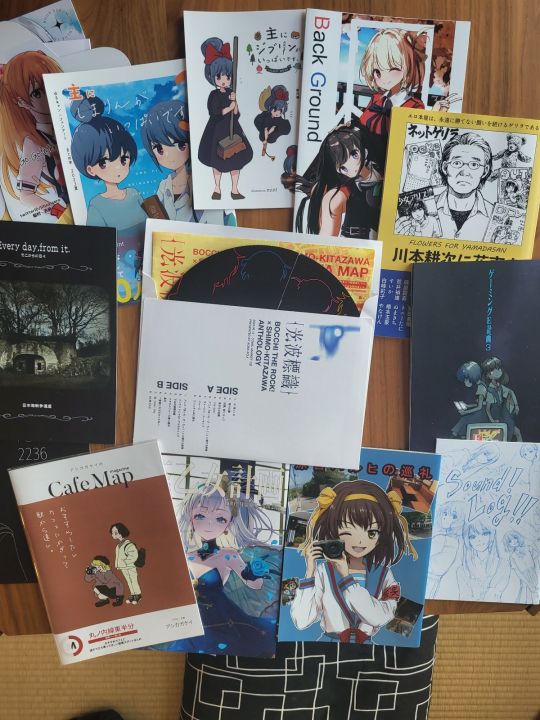
Arranged on the apartment chabudai for maximum weeb vibes. I won't go through all of them, just note a few to showcase the diversity of things that were on offer. If there is one someone wants a deep dive on, let me know, happy to take photos!
First up, the centerfold star - A Bocchi/Shimo-Kitazawa Fan Celebration doujin in the shape of a vinyl record:

Its extremely adorable, these guys went all in. It comes in an album case with "tracks", the vinyl-shaped doujin has an A side and a B side with totally different content when flipped, and when you are reading it the text slowly rotates page by page as if you are "playing" the disc.

Some of it is the circle's thoughts on Bocchi, but more is about their love for the part of Tokyo that Bocchi takes place in, Shimo-Kitazawa, with sections on show-accurate locations and favourite cafes and stores. They even included a map with all of the spots they recommend you visit in the area!

This one is to me the most "magic of doujin": we all have favourite parts of our cities, and if we sat down could maybe make a map like this. But why would we do that? Who would care? The joint power of a locally-set anime & Comiket, however, makes that personal map into a piece of art people want to own. This piece is pure creativity & passion, and its very special for that - a symbol of doujinshi.
Also one of their members spoke fluent English and aggressively upsold foreigners at the event ^_^ Successfully so! Good job.
For something a little less high concept, this tiny artbook of Rin from Laid-Back Camp as Ghibli characters is adorable:
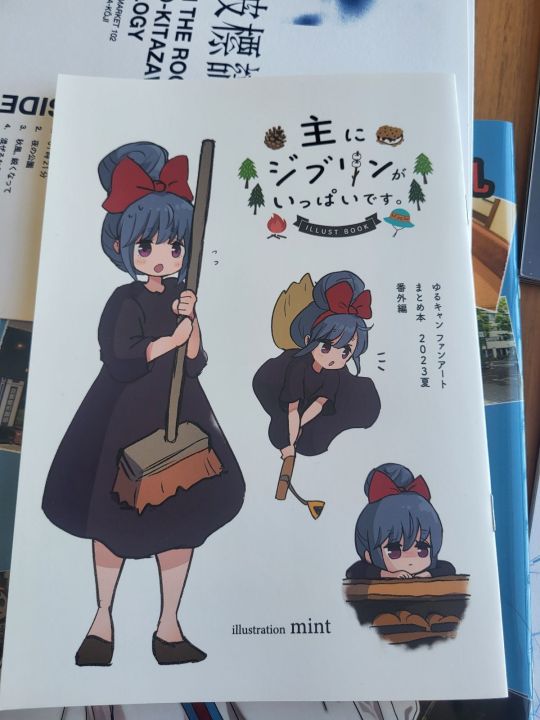
A smol kiki, too cute. And look at her as Nausicaa! Full blue and ready to kick ass.

Its like 5 pages and each page is a gem, great buy.
This next one is a genre of book I really love - the photography/anime composite book focusing on scene locations, starring our girl Haruhi Suzumiya:

I appreciate how much fun this one has with its concept, lots of cute drawings on the margins; and the photographs are not all Haruhi related, instead it is just the author's own journey put through a Haruhi lens. This book is another great example of how "transformative" these works are, breaking the bounds of their source material.

"Hey, its me!"

Okay, now for some extreme Ash-brand doujin - Flowers for Yamada-san, a history doujin about Hiroyoshi Yamada, also known by the name Koji Kawamoto, a manga & magazine editor who played an instrumental part of the lolicon boom of the 1980's:

He passed away this year, and so this doujin is a memorial to him, an accounting of his influence and role in early manga, a wider discussion of the lolicon boom in general, and its own creative work; sandwiched between essays are comic depictions of moments of his career done in a mimicry the classic loli/bishoujo early 80's style:

This will of course take some time to read - I am excited to dig into it. As I have mentioned before, I am toying with the idea of a deeper research project on the "lolicon boom"; its, for understandable reasons, extremely neglected in western discourse of the history of anime & manga. But that moral aversion doesn't change how instrumental this period was, so I think a lot of good work could be done documenting and explaining its place. This book was an amazing find to stumble upon, and the creators are extremely well-researched on this period.
Anyway this is probably long enough lol. I did find some ero-doujin as well of course, though very few - as I mentioned, Comiket was a warzone, and I did not 'prep' for that side of things. I laughed at the idea of people doing days of research to prep of their porn buying adventure - I was the fool, they the wise, you absolutely need to do that if that is your goal. It wasn't really mine but I respect it now for sure - and I actually found the Comiket experience sort of liberating on that front, I "get it" now in a way I didn't before.
This is of course a tiny sliver of the book buys from Japan - hopefully I can make a few posts about the rest soon.
25 notes
·
View notes
Text
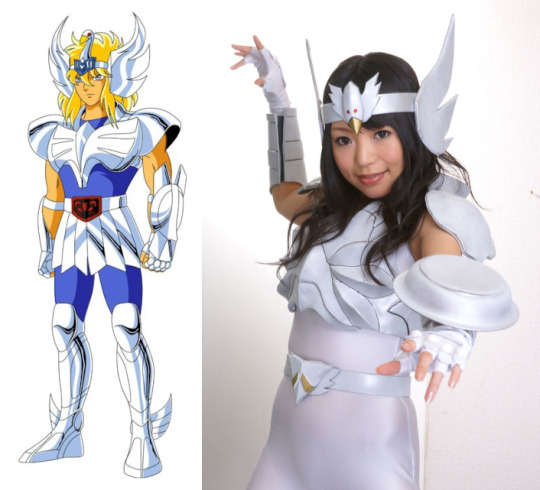
Gender flipped Cygnus Hyoga from Saint Seiya (1985).
14 notes
·
View notes
